
Estás filtrando por
Se encontraron 1556 resultados en recursos

¡No te compliques! Los programas más sencillos del mundo.
8 Aspiradores de mano Dyson contra todos.
El fin de las contraseñas, Google, Microsoft y Apple impulsan las Passkeys.
Lo más nuevo de Amazon.
WhatsApp presenta sus canales.
Fuente:
Pasa La Página
Formatos de contenido:
Publicaciones periódicas
Compartir este contenido
Computer Hoy - 27/10/23
Copia el enlace o compártelo en redes sociales
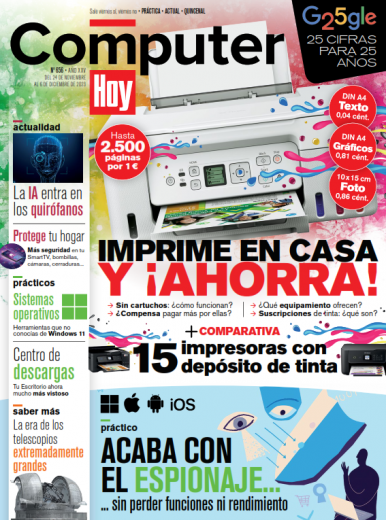
Computer Hoy - 24/11/23
Imprime en casa y ¡Ahorra! Comparativa 15 impresoras con depósito de tinta.
La IA entra en los quirófanos.
Acaba con el espionaje... Sin perder funciones ni rendimiento.
Sistemas operativos, herramientas que no conocías de Windows 11.
Fuente:
Pasa La Página
Formatos de contenido:
Publicaciones periódicas
Compartir este contenido
Computer Hoy - 24/11/23
Copia el enlace o compártelo en redes sociales
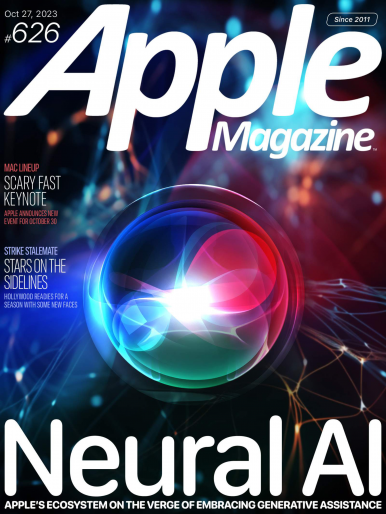
AppleMagazine - 27/10/23
Neural AI - Apple's ecosystem on the verge of embracing generative assistance.
Mac Lineup. Scary fast Keynote, Apple announces new event for october 30.
Strike stalemate. Stars on the sidelines, Hollywood readies for a season with some new faces.
Fuente:
Pasa La Página
Formatos de contenido:
Publicaciones periódicas
Compartir este contenido
AppleMagazine - 27/10/23
Copia el enlace o compártelo en redes sociales

APC - 09/10/23
The best free PC Software. You'll never have to play for... the top Apps that are 100% free.
Random access. How many monkeys does it take to make a neural-computer interface?
Tech talk DLSS 3.5 and ray reconstruction.
A-list. The best products on the market.
Fuente:
Pasa La Página
Formatos de contenido:
Publicaciones periódicas
Compartir este contenido
APC - 09/10/23
Copia el enlace o compártelo en redes sociales

On Off - 01/10/23
Panorámica. Receptores de AV.
Reportaje. Altavoces portátiles Roberts.
IFA 2023. La feria europea de electrónica de consumo.
Reportaje. Control de vibraciones.
Áreatech. Sensores de smartphone.
Fuente:
Pasa La Página
Formatos de contenido:
Publicaciones periódicas
Compartir este contenido
On Off - 01/10/23
Copia el enlace o compártelo en redes sociales
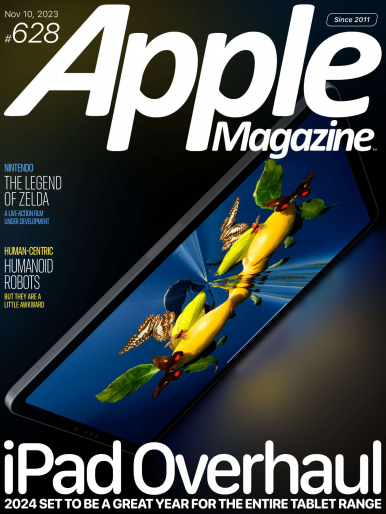
AppleMagazine - 10/11/23
Ipad Overhaul. 2024 Set To Be A Great Year For The Entire Tablet Range.
Nintendo. The Legend Of Zelda. A Live-Action Film Under Development.
Human - Centric. Humanoid Robots. But They Are A Little Awkward.
In David Fincher’s ‘The Killer,’ An Assassin Hides In Plain Sight.
Fuente:
Pasa La Página
Formatos de contenido:
Publicaciones periódicas
Compartir este contenido
AppleMagazine - 10/11/23
Copia el enlace o compártelo en redes sociales
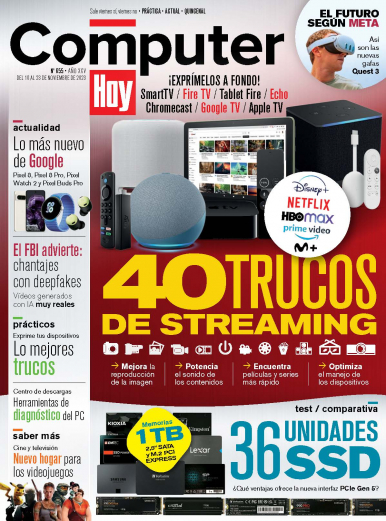
Computer Hoy - 10/11/23
40 trucos de Streaming ¡Exprímelos a fondo! SmarTV / Fire TV / Tablet Fire / Echo / Chromecast / Google TV / Apple TV.
36 unidades SSD. ¿Qué ventajas ofrece la nueva interfaz PCIe Gen 5?.
El futuro según META. Así son las nuevas gafas Quest 3.
Lo más nuevo de Google. Pixel 8, Pixel 8 Pro, Pixel Watch 2 y Pixel Bunds Pro.
Fuente:
Pasa La Página
Formatos de contenido:
Publicaciones periódicas
Compartir este contenido
Computer Hoy - 10/11/23
Copia el enlace o compártelo en redes sociales
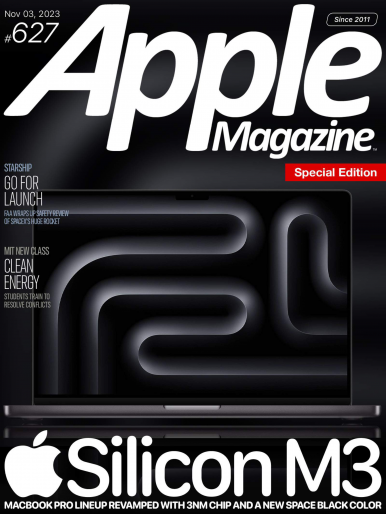
AppleMagazine - 03/11/23
Special Edition: Apple Silicon M3 - MacBook Pro lineup revamped with 3NM chip and a new space black color.
Starship. Go for launch, FAA wraps up safety review of SpaceX's huge rocket.
Mit new class. Clean energy, students train to resolve conflicts.
Fuente:
Pasa La Página
Formatos de contenido:
Publicaciones periódicas
Compartir este contenido
AppleMagazine - 03/11/23
Copia el enlace o compártelo en redes sociales
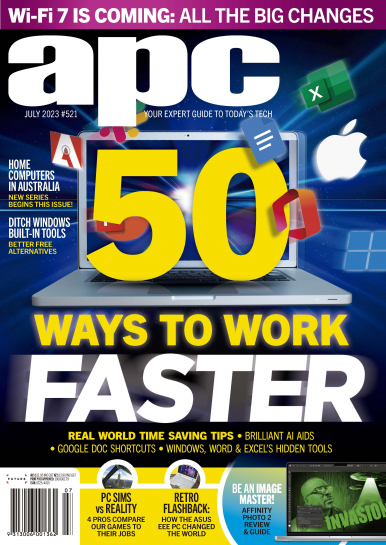
APC - 19/06/23
50 ways to work faster. The best way to achieve more is to work smarter, which is why we’ve put together 50 productivity tips based on our editors’ and readers’ advice.
End user. Microsoft is losing the console race.
Two bits. The return of Computex.
Fuente:
Pasa La Página
Formatos de contenido:
Publicaciones periódicas
Compartir este contenido
APC - 19/06/23
Copia el enlace o compártelo en redes sociales

AppleMagazine - 09/06/23
Vision Pro - The dawn of the spatial computing.
Apple. Through history pivotal product announcements.
Bluesky. Fighting Twitter the hottest members-only spot at the moment.
Fuente:
Pasa La Página
Formatos de contenido:
Publicaciones periódicas
Compartir este contenido
AppleMagazine - 09/06/23
Copia el enlace o compártelo en redes sociales
Selecciona las Colecciones en las que vas a añadir el contenido
Para consultar los contenidos añadidos busca la opción Tus colecciones en el menú principal o en Mi perfil.
